- 한국어
- English
- 日本語
- 中文
- العربية
- Español
- Français
- Deutsch
- Pусский
- Tiếng Việt
- Indonesian
By Honorary Reporter Dayviana Diaz from Cuba
Photos = Youngmin Lee
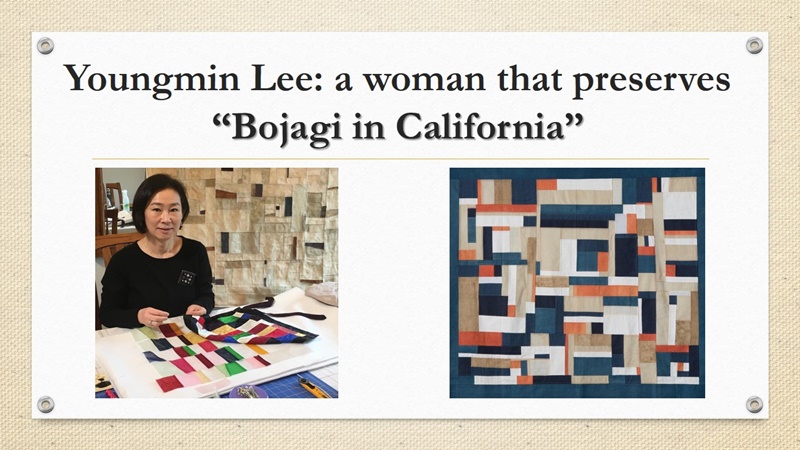
Youngmin Lee is a textile artist who was born and raised in Korea but now lives in the San Francisco Bay Area. She studied clothing and textiles in college and received an MFA in fashion design in Seoul. She worked as a fashion designer in the Korean capital until she moved to California in 1996.
The artist has held numerous workshops, classes and demonstrations on Korean arts and crafts around the Bay Area. Her works of bojagi (traditional wrapping cloth) and maedeup (traditional decorative knots) is part of the Asia Alive Program at the Asian Art Museum in San Francisco.
The following are excerpts from an interview with this artist.
Why are you so interested in bojagi?
My educational background is clothing, textiles and fashion design, and I worked as a fashion designer for a few years. So textiles are naturally a comfortable subject for me. I chose bojagi as my creative medium to maintain ties to my Korean heritage and culture after I moved from Seoul to the San Francisco Bay Area. I appreciate the beauty that results from the long and slow process of hand stitching when making bojagi. I've held workshops on Korean textile art and crafts and taught numerous workshops on textile arts like ssamsol jogakbo (patchworked bojagi), several kinds of maedeup, golmu (thimble) and lotus leaf mat.
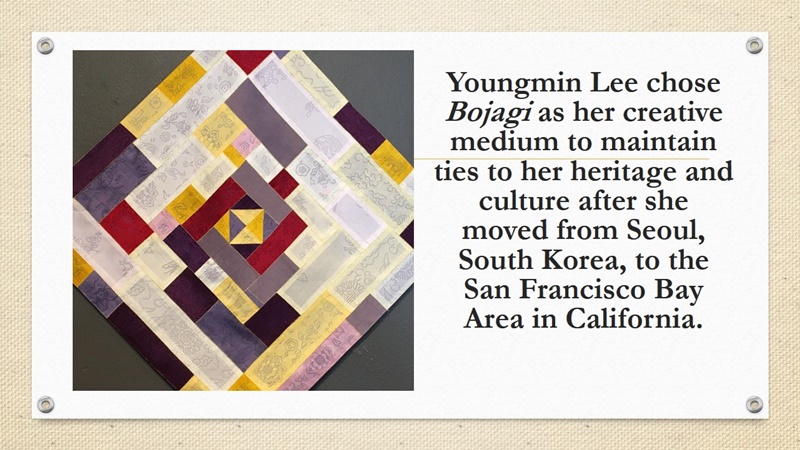
Lee Youngmin said jogakbo bojagi is a form of color therapy for her.
How do you get inspired for your bojagi designs?
Leftover fabric often sparks my organic creative process. I start by putting small fragments together, piecing more and more together as I work. Sometimes the piece grows as planned, but other times, it grows as if it has its own intentions. I just enjoy the rhythm of stitching and leave the result beyond my control. I appreciate the beauty produced from the long and slow process of hand stitching, which I consider a meditative act that creates an unexpected and spontaneous result.
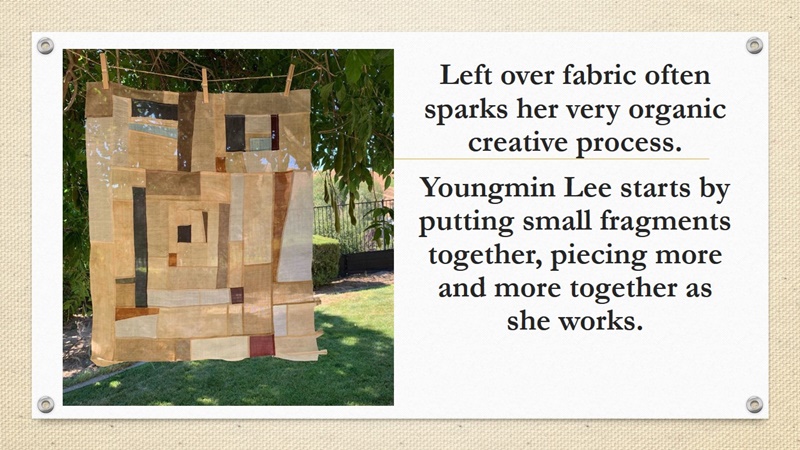
Ssamsol bojagi
How important has your professional training been and how do you pass on your know-how?
Bojagi was taught from generation to generation on the Korean Peninsula. So making and using it in daily life don't require much special training. But when I decided to teach and share this old Korean tradition, my education and training in textile helped a lot. I created a curriculum and material lists for classes. In addition to teaching in person, I made in 2013 the DVD "Bojagi: The Art of Wrapping Cloths" to reach people everywhere and help them learn about bojagi step by step.
Have your bojagi works been displayed publicly?
My "Remnants of Memory" was selected to appear in the exhibition "The de Young Open" at the Fine Arts Museums of San Francisco. For this piece, I used vintage fabrics from Korea and hand-dyed fabrics at home in California. I was thinking whether fabrics could hold memories from the past and wanted to channel old memories while hand-stitching this bojagi.
My work was also selected to be displayed at the "International Fiber Arts X" exhibition this year (July 31–Sept. 12) at Sebastopol Center for the Arts in Northern California. My works have been exhibited and collected throughout the U.S. and abroad, and the Asian Art Museum has three of my works in its collection. Currently I am running a page on Instagram to be present to the larger audience. This helped me better communicate with people around the globe who are interested in my works, not to mention how much they inspire me.
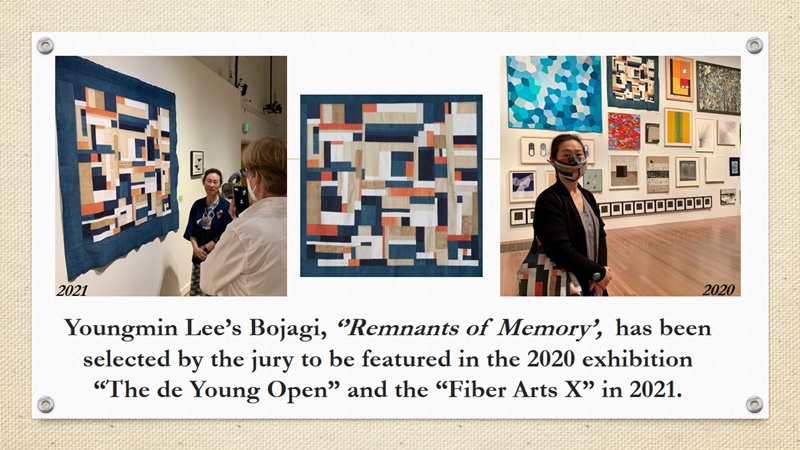
Her work "Remnants of Memory" has been shown at several art exhibitions in the U.S.
Finally, why do you want to preserve bojagi?
This work is comfortable and natural to me, as it connects my native and adopted cultures. I love to share my native culture and textile tradition with likeminded people. And I wish to pass on well-being and happiness to others.
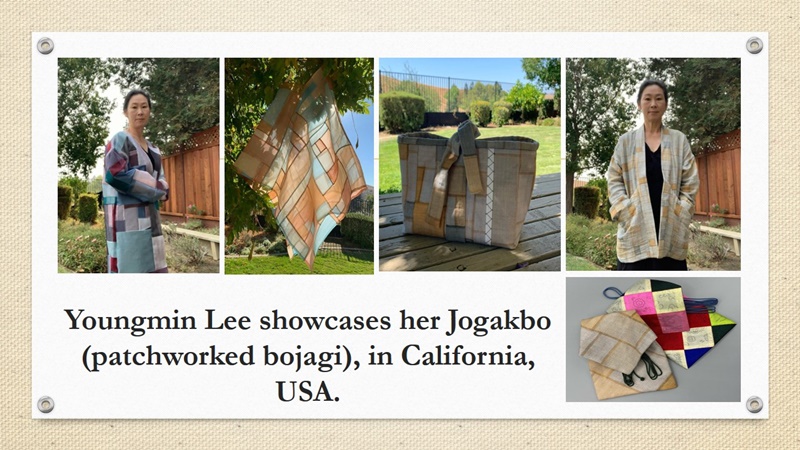
Lee Youngmin uses jogakbo bojagi in common clothing and accessories she designs like (from left to right) a robe, scarf, bag, jacket and yakjumeoni (a traditional bag for carrying medicine).
kalhong617@korea.kr
*This article is written by a Korea.net Honorary Reporter. Our group of Honorary Reporters are from all around the world, and they share with Korea.net their love and passion for all things Korean.